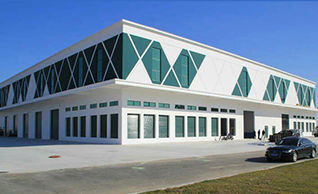How to check reefer container temperature
(2024年04月18日)https://www.ucontainers.com/news/How-to-check-reefer-container-temperature.html
Step 1: Preparing the Reefer Container
Before loading any cargo into a reefer container, it is crucial to prepare the container adequately. Ensure that the container is clean, in good condition, and free from any previous contaminants or odors. Perform a thorough inspection of the container's insulation, door seals, and cooling system to ensure proper functionality.
Step 2: Selecting the Right Temperature Monitoring Device
Choosing the appropriate temperature monitoring device is essential for accurate and reliable measurements. There are various types of devices available, such as digital thermometers, wireless sensors, and data loggers. Consider the specific requirements of your cargo and select a device that meets your monitoring needs.
Step 3: Installing the Temperature Monitoring Device
Proper installation of the temperature monitoring device is critical to obtaining accurate readings. Follow the manufacturer's instructions for placement and positioning of the device within the reefer container. Ensure that the device is securely attached and does not obstruct the airflow or interfere with the cargo.
Step 4: Setting the Desired Temperature Range
Based on the requirements of your cargo, set the desired temperature range on the temperature monitoring device. It is essential to establish a range that maintains the optimal conditions for the specific goods being transported. Consult the cargo's handling instructions or industry guidelines for the recommended temperature range.
Step 5: Monitoring and Recording Temperature Readings
Once the reefer container is loaded and the temperature monitoring device is set up, monitor the temperature readings regularly. Record the temperature data at predefined intervals or continuously, depending on the monitoring system used. Pay close attention to any deviations from the desired temperature range.
Step 6: Analyzing Temperature Data
Periodically analyze the temperature data collected during transportation. Look for trends, patterns, or significant fluctuations that may indicate potential issues. Identify any instances of temperature deviations and investigate their causes.
Step 7: Taking Corrective Actions
If the temperature deviates from the desired range or shows irregular patterns, it is crucial to take immediate corrective actions. This may involve adjusting the container's cooling settings, inspecting the cargo for damage, or contacting the relevant personnel for further investigation.
Step 8: Documenting Temperature Records
Maintaining accurate and detailed temperature records is essential for traceability and compliance purposes. Document the temperature readings, corrective actions taken, and any relevant observations throughout the transportation process. This documentation provides valuable evidence of the cargo's condition and adherence to temperature requirements.
Common Challenges in Monitoring Reefer Container Temperature
Monitoring reefer container temperature comes with certain challenges, such as sensor calibration, connectivity issues, and power supply reliability. It is crucial to address these challenges proactively by regularly testing the monitoring systems, ensuring proper maintenance, and having contingency plans in place.
Best Practices for Reefer Container Temperature Monitoring
To ensure effective temperature monitoring of reefer containers, consider implementing the following best practices:
Regular calibration and maintenance of temperature monitoring devices
Continuous monitoring and real-time alerts for temperature deviations
Staff training on temperature monitoring procedures and corrective actions
Regular audits and inspections of the reefer containers and monitoring systems
Reefer Container Tracking by ShenZhen CIMC Intelligent Technology Co., Ltd., Installed near the chiller, realize data interaction with the chiller through satellite positioning and cellular communication (optional LEO satellite communication), and monitor the process of container cold chain transportation.
Reefer Container Tracking can reduce costs (operation and maintenance) for container owners and cargo owners, improve cargo supervision capabilities, optimize deployment plans, reduce transportation risks and improve management efficiency for users.
For more information on reefer container management and monitoring, please contact ShenZhen CIMC Intelligent.
More details of reefer container tracking, please visit our website.

- このできごとのURL:


コメント